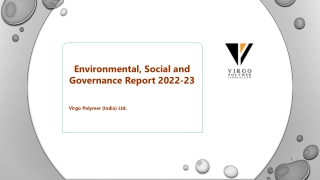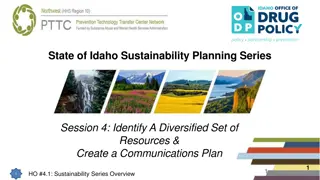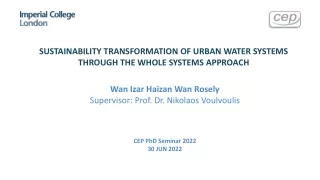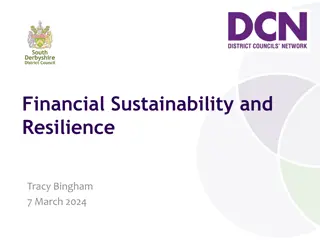The Impact of Going Paperless on Sustainability: Case Studies & Benefits
Explore the environmental implications, benefits, and case studies of transitioning to a paperless operation in two agencies - Oregon Department of Administrative Services Office of Sustainability. Discover the reduction in paper usage, energy consumption, and costs associated with paper documents, along with the challenges and considerations of going paperless. Gain insights into the need for balancing sustainability goals with operational requirements in a digital age.
Download Presentation
Please find below an Image/Link to download the presentation.
The content on the website is provided AS IS for your information and personal use only. It may not be sold, licensed, or shared on other websites without obtaining consent from the author. Download presentation by click this link. If you encounter any issues during the download, it is possible that the publisher has removed the file from their server.
Presentation Transcript
Going Paperless: Two Agency Case Studies Oregon Department of Administrative Services Office of Sustainability
Todays Agenda Introductions and why consider going paperless? (10 minutes) Dave Wortman, Statewide Sustainability Officer, DAS Case Study 1: OHA/DHS (15 minutes) Jennifer Bittel, Brenda Brown, OHA/DHS Case Study 2: ODOT (15 minutes) Kayla Vanhoose, ODOT Group Questions and Discussion (20 minutes) Adam Helvey, DAS Sustainable Procurement Program Manager Wrap up
Paper Use in the U.S. Before Covid, the average office worker used 10,000 sheets of copy paper each year. Over 40% of wood pulp goes toward the production of paper. Printing and writing paper equals about one-half of U.S. paper production. The federal government spent upwards of $1.3 billion on paper pre-Covid.
Impacts of Paper Use The U.S. pulp and paper industry is among the largest energy consuming industries in the US. Water use: It takes about 47 gallons of water to produce one ream of paper. Air and water quality impacts from paper mills. Greenhouse gas emissions: changes in forest carbon storage, transport, processing, use and disposal of paper. Calculator for paper impacts: Paper Calculator 4.0 | Environmental Paper Network
Some Benefits of Going Paperless Reduce the amount of paper, ink and power used to produce paper documents (and dollars). Help reduce the cost of producing and mailing paper documents. Reduce time printing, filing and searching for documents easier access in the cloud. Reduce physical storage space needs. Easier to share files, particularly when employees are working remotely.
But paper is still our friend Paperless isn t right for every operation or agency need (business cards, letterhead, legislation, etc.) Paperless operations also have a footprint on the environment (energy and carbon use for digital storage) (about 3-7kWh per gigabyte in the cloud). Trees are a renewable resource and a part of Oregon s economy. According to the American Forest and Paper Association, the 2020 paper recycling rate was 65.7 percent. 80 percent of all US paper mills use at least some recycled fiber to make paper products.
Case Study 1: OHA/DHS Jennifer Bittel, Brenda Brown
Case Study 2: ODOT Kayla Vanhoose
Q and A/Discussion What questions do you have for our presenters? What lessons can your agency take away from today?
Thank you! Dave Wortman, Statewide Sustainability Officer, DAS David.wortman@das.oregon.gov Adam Helvey, Sustainable Procurement Program Manager, DAS Adam.helvey@das.oregon.gov

















































